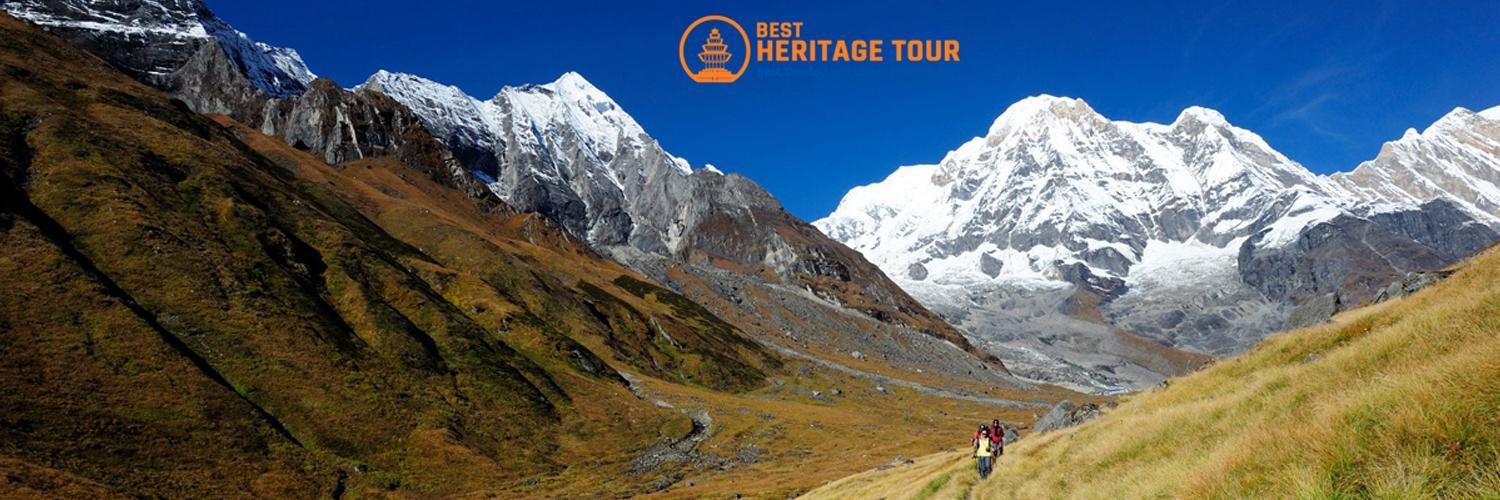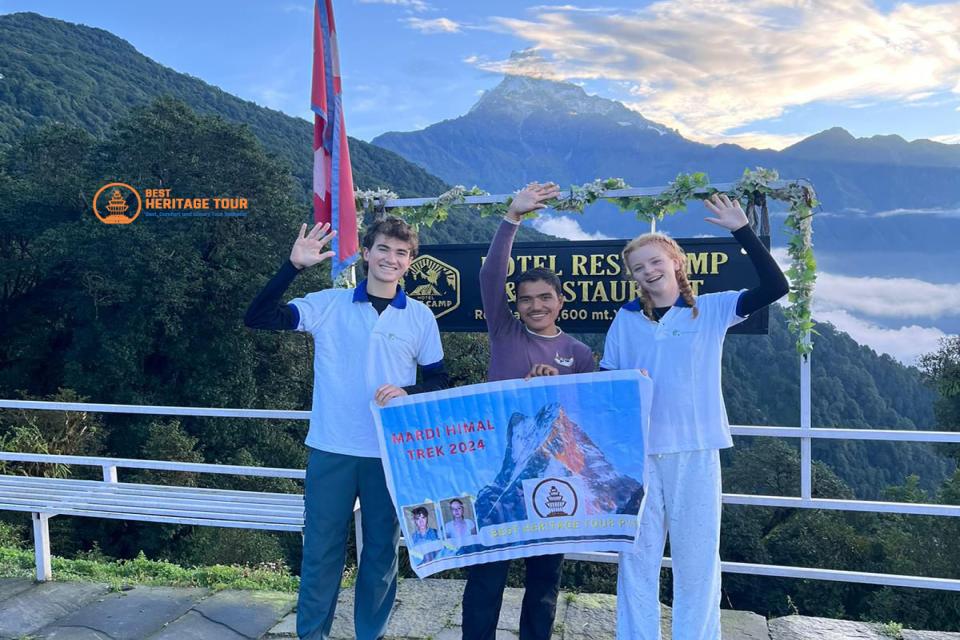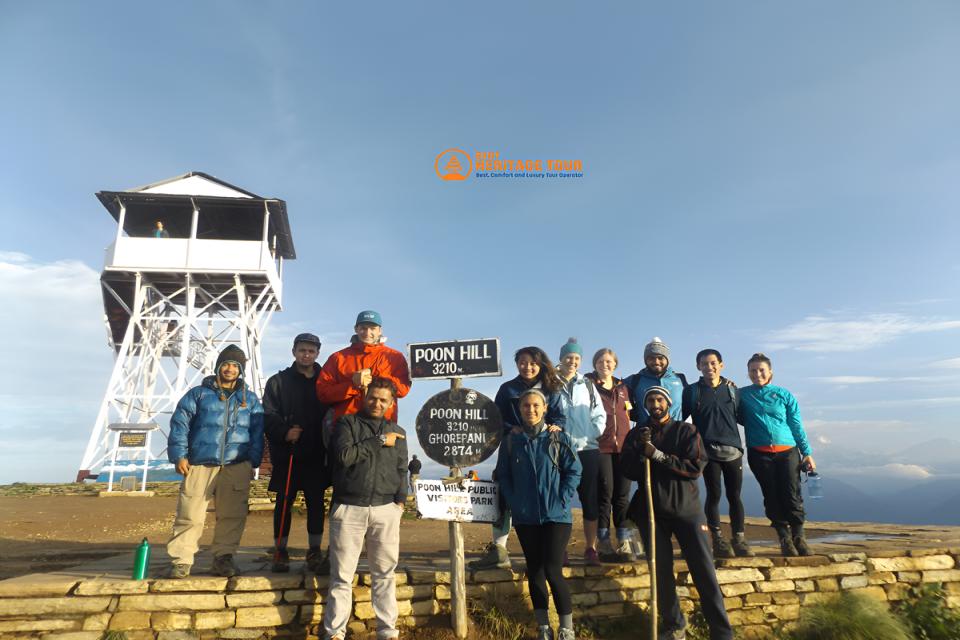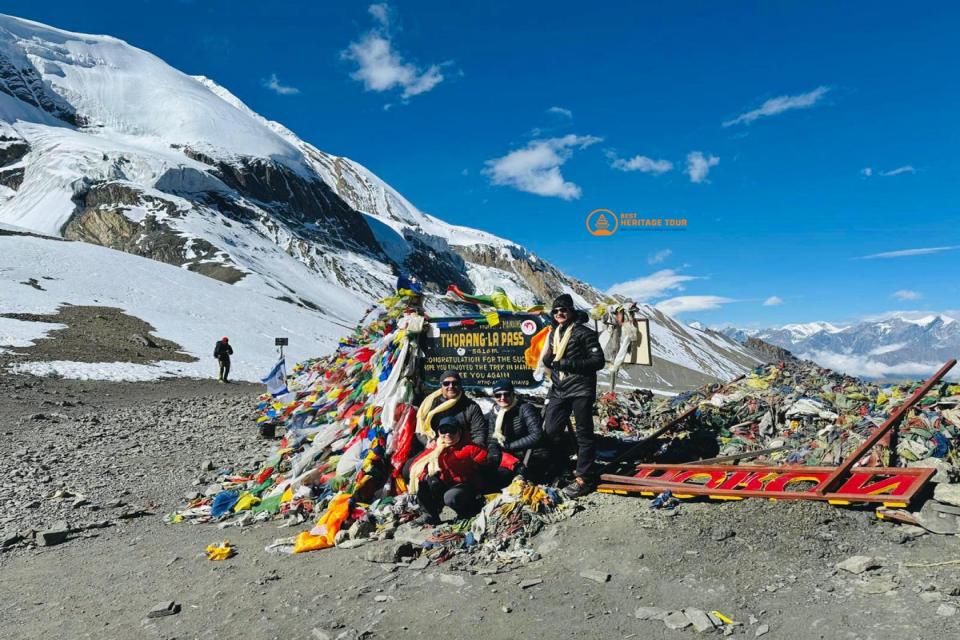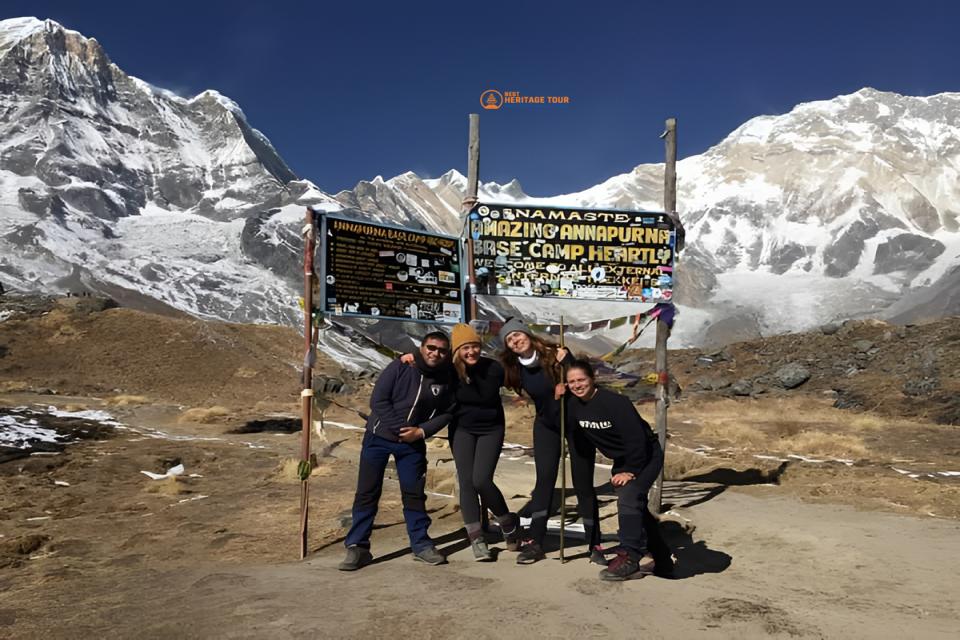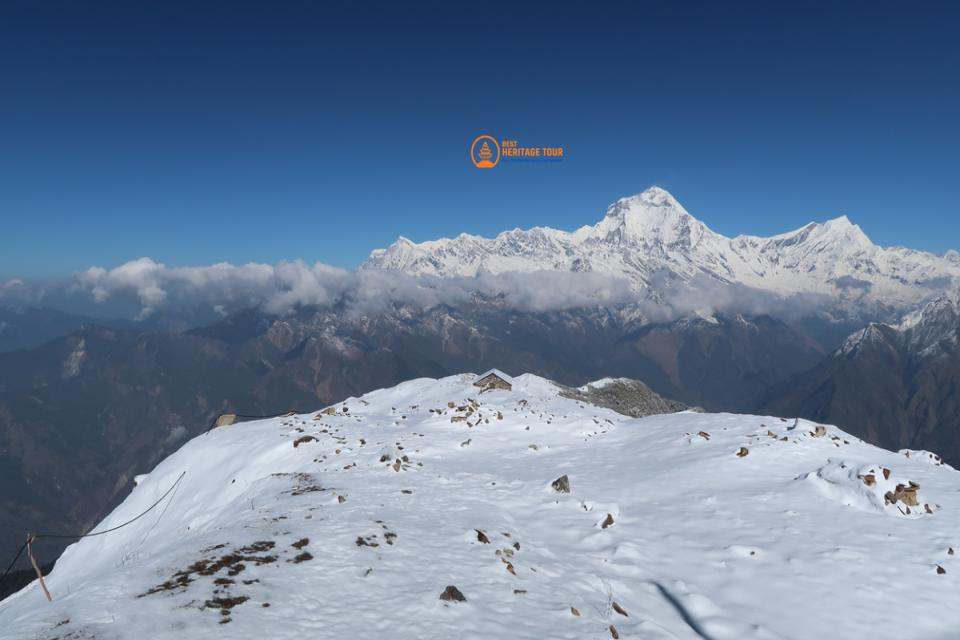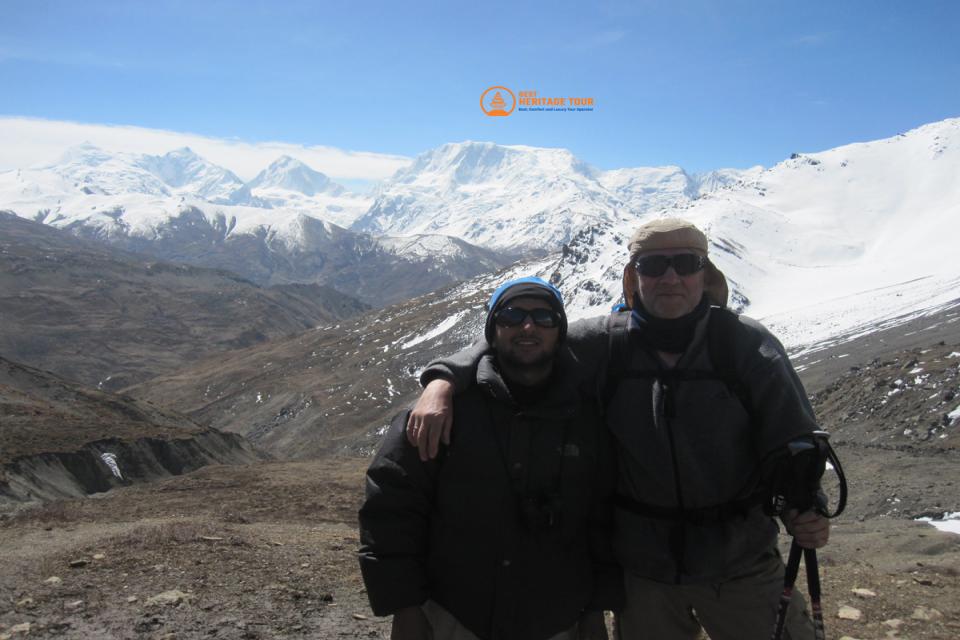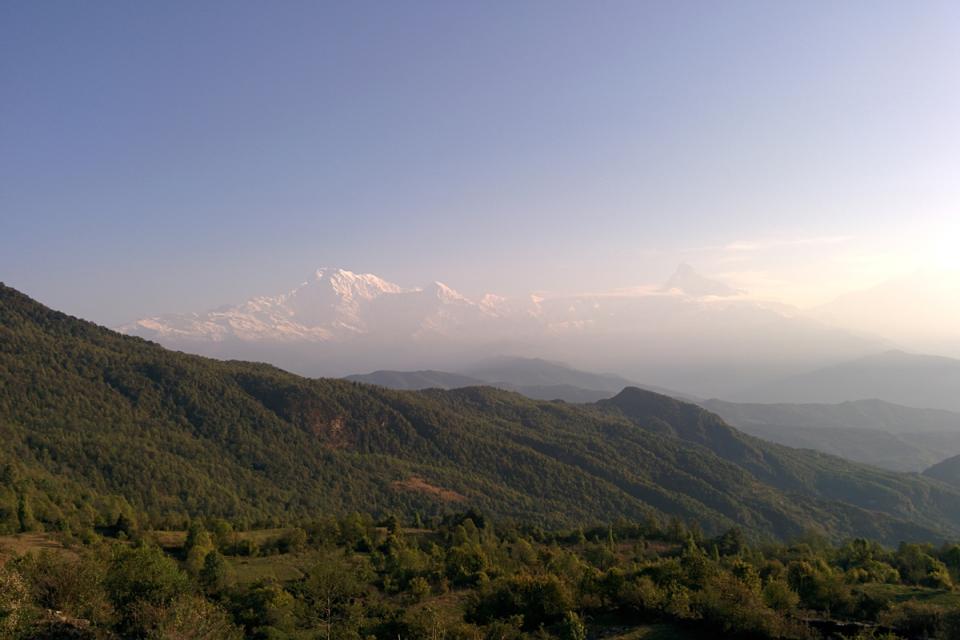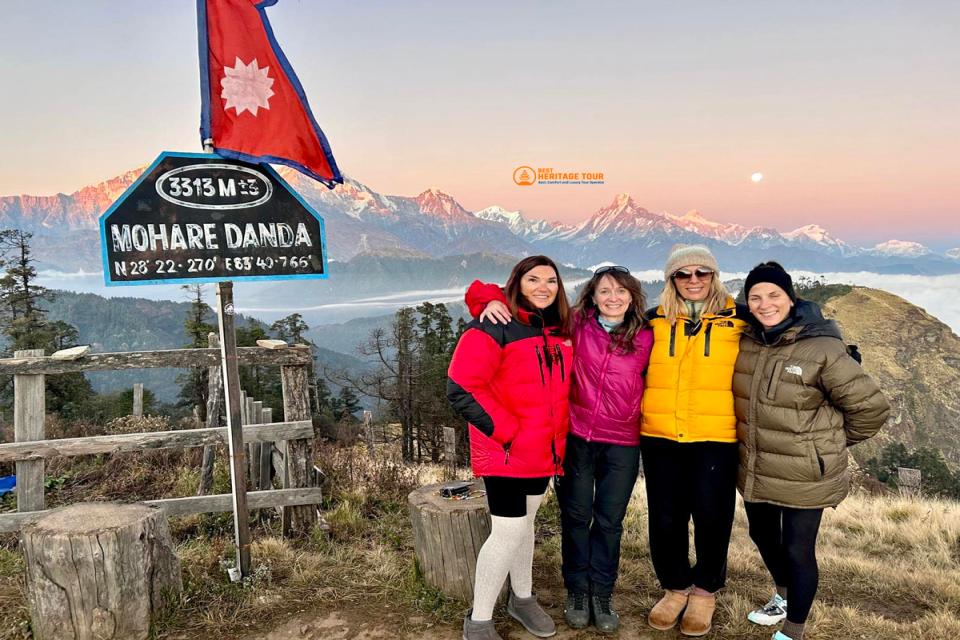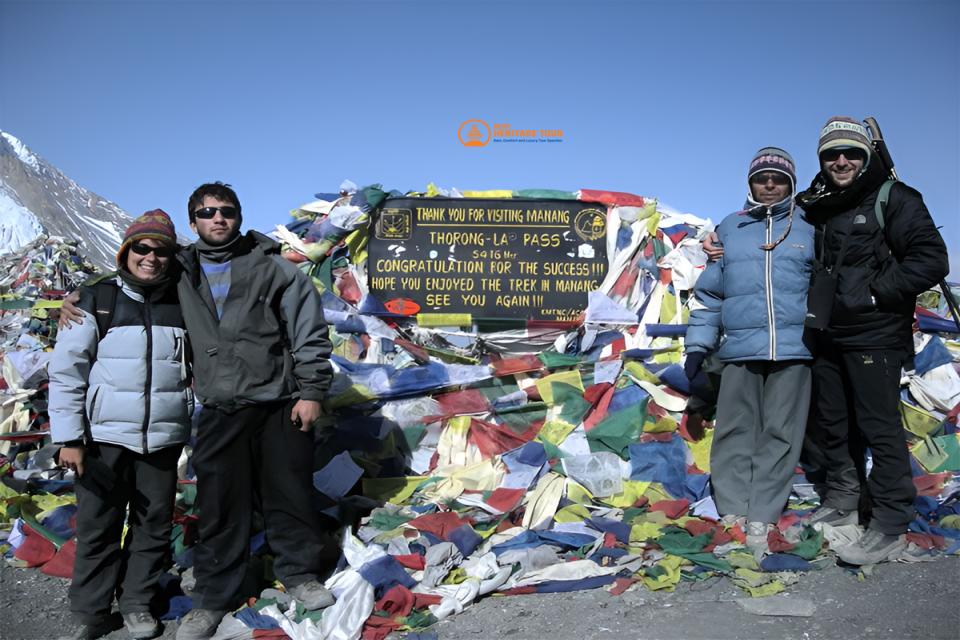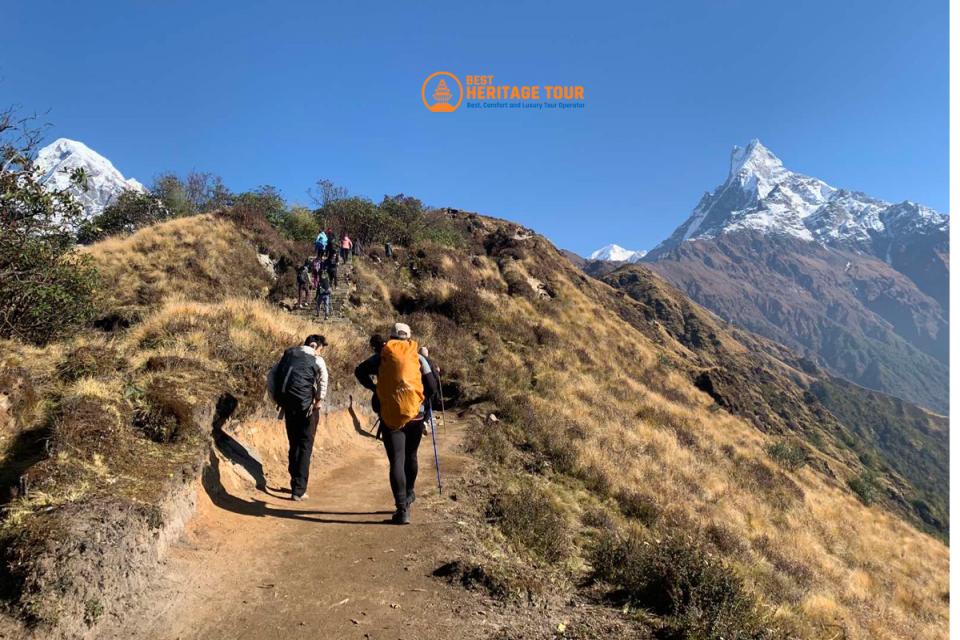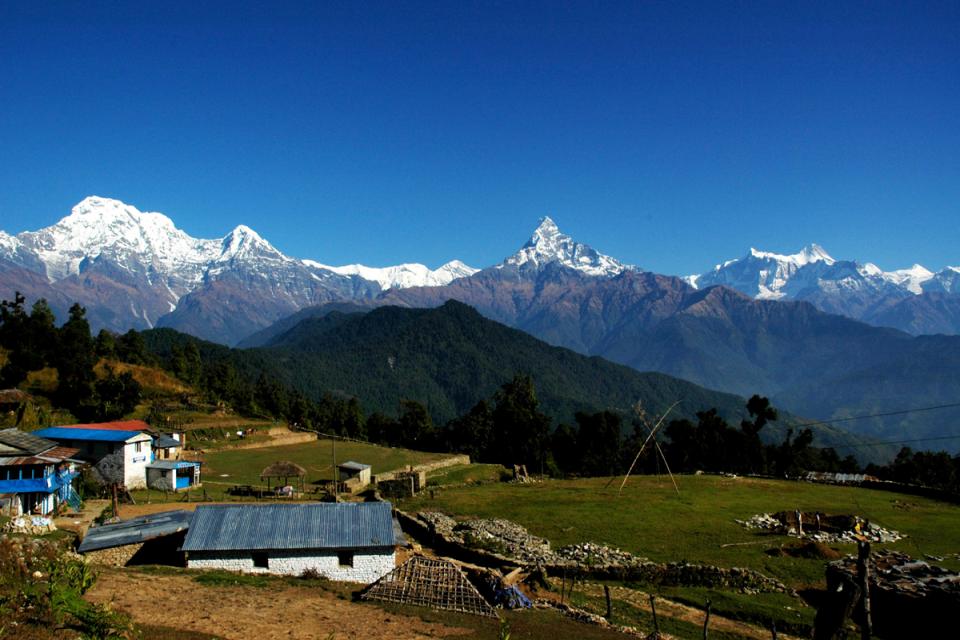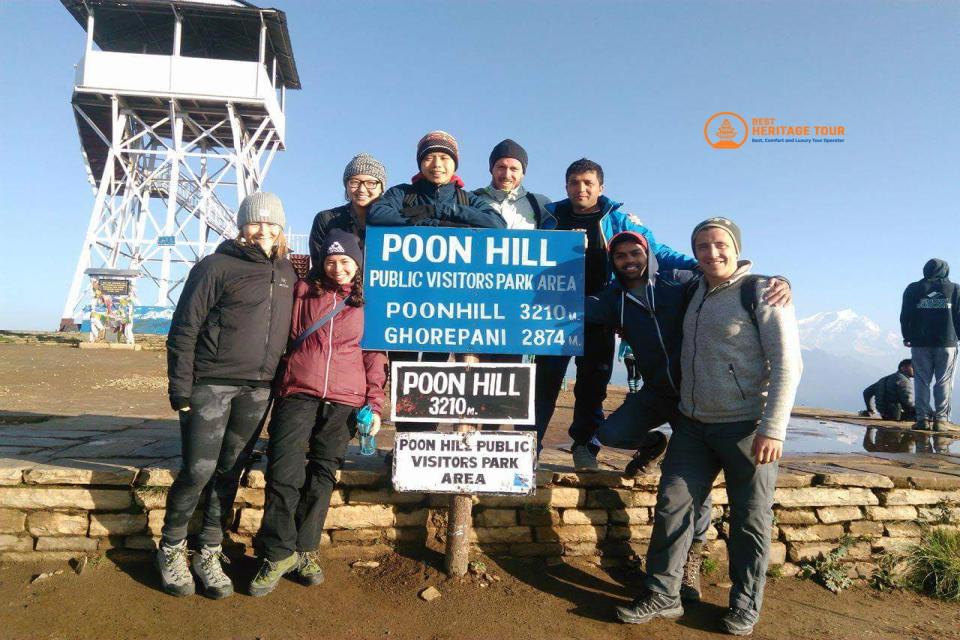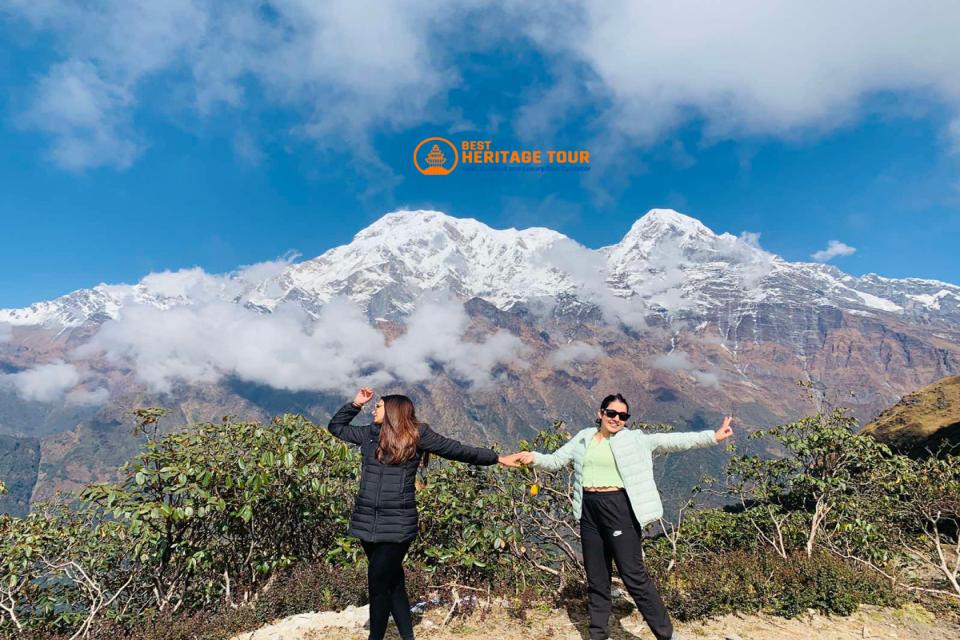The Annapurna Conservation Area (ACA) in Nepal is one of the most renowned and diverse trekking regions in the world. It offers a spectacular range of trekking routes, including the famous Annapurna Circuit trek and the scenic Mardi Himal trek. This area promises an unforgettable adventure, whether you're an experienced trekker or a beginner. With its breathtaking mountain landscapes, rich biodiversity, and unique local culture, the Annapurna Region is a must-visit for trekking enthusiasts.
In this complete guide to trekking in the Annapurna Conservation Area, we’ll dive into everything you need to know. We’ll cover the best trekking routes like the Annapurna Circuit and Mardi Himal Trek, the essential ACAP permit you’ll need, and the incredible wildlife in Annapurna. We’ll also provide expert travel tips to help you make the most of your adventure in the Annapurna Region.
What is the Annapurna Conservation Area?
The Annapurna Conservation Area (ACA) is Nepal’s largest protected area, covering an expansive 7,629 square kilometers across five districts—Manang, Mustang, Kaski, Myagdi, and Lamjung. Established in 1986 and managed by the National Trust for Nature Conservation (NTNC), the ACA was the first conservation area in Nepal to incorporate a sustainable tourism model that blends environmental protection with community development.
The area is centered around the majestic Annapurna Massif, home to towering peaks like Annapurna I (8,091m), Machhapuchhre (Fishtail), and Gangapurna, attracting trekkers and climbers from all over the globe. Unlike traditional national parks, the ACA is a living conservation zone, meaning over 100,000 people reside here, practicing age-old cultures and customs in harmony with nature.
From lush subtropical forests to alpine deserts, glacial valleys, and ancient villages, the Annapurna Conservation Area is a playground for explorers and a sanctuary for biodiversity. It’s not just a trekker’s paradise—it's a living, breathing embodiment of Nepal's natural and cultural heritage.
Why Visit the Annapurna Conservation Area?
Wondering what makes the Annapurna Region one of the most sought-after destinations in the Himalayas? Here’s why the Annapurna Conservation Area should be on every adventurer’s bucket list:
1. Iconic Trekking Trails
Home to the legendary Annapurna Circuit and Annapurna Base Camp (ABC) trek, this region offers trails suitable for both beginners and seasoned trekkers. The diversity of routes—ranging from 3-day treks like Ghorepani–Poon Hill to 3-week circuits—means you can tailor your journey to match your experience and stamina.
2. Incredible Biodiversity
From snow leopards and Himalayan blue sheep to over 470 bird species, the ACA is a treasure trove for wildlife enthusiasts. It spans multiple climate zones, creating habitats for rare and endangered species.
3. Rich Cultural Tapestry
Explore remote villages inhabited by Gurung, Magar, Thakali, and Tibetan-influenced communities. Discover monasteries, festivals, and local cuisines that reflect centuries of heritage and belief systems unique to the high Himalayas.
4. Sustainable & Responsible Travel
The ACA is a model for community-managed conservation. Your trekking fees support local infrastructure, education, and reforestation efforts. This ensures your adventure benefits not just the environment but also the people who live there.
5. Panoramic Himalayan Views
Nowhere else in Nepal can you enjoy such an immersive experience of the Himalayas—from sunrise over Poon Hill to the glacial amphitheater at Annapurna Base Camp, every step rewards you with jaw-dropping vistas.
Best Treks in the Annapurna Region
The Annapurna Region boasts some of the best treks in Nepal, offering a wide range of landscapes, durations, and difficulty levels. Here are the must-do treks in the Annapurna Conservation Area:
1. Annapurna Circuit Trek
-
Duration: 14–18 days
-
Highest Point: Thorong La Pass (5,416m)
-
Highlights: Crosses dramatic terrain from subtropical forests to the trans-Himalayan desert of Mustang. Includes hot springs at Tatopani, views of Dhaulagiri, and Tibetan culture in Manang.
2. Annapurna Base Camp (ABC) Trek
-
Duration: 8–12 days
-
Highest Point: ABC at 4,130m
-
Highlights: A direct route into the heart of the Annapurna Sanctuary. Dramatic glacier-carved amphitheaters, lush forests, and panoramic Himalayan views await.
3. Mardi Himal Trek
-
Duration: 4–8 days
-
Highest Point: Mardi Himal Base Camp (4,500m)
-
Highlights: A quieter and less commercialized route offering close-up views of Machhapuchhre and Annapurna South.
4. Ghorepani Poon Hill Trek
-
Duration: 3–6 days
-
Highest Point: Poon Hill (3,210m)
-
Highlights: Famous for sunrise views of Annapurna and Dhaulagiri. Ideal for beginner trekkers and families.
5. Khopra Ridge Trek
-
Duration: 5–7 days
-
Highest Point: Khayer Lake (4,500m)
-
Highlights: Offers solitude, community lodges, and spectacular ridge-line trekking. Lesser-known but deeply rewarding.
6. Narphu Valley Trek
-
Duration: 12–14 days
-
Highest Point: Kang La Pass (5,322m)
-
Highlights: Remote Tibetan villages, raw Himalayan beauty, and epic views of Annapurna and Manaslu.
7. Tilicho Lake Trek
-
Duration: 10–12 days (often combined with Annapurna Circuit)
-
Highest Point: Tilicho Lake (4,919m)
-
Highlights: Visit one of the highest lakes in the world. Challenging but scenic with breathtaking landscapes.
Wildlife and Biodiversity in Annapurna
The Annapurna Conservation Area is a biodiversity hotspot, teeming with a remarkable variety of flora and fauna. From the subtropical lowlands to the alpine heights, the region’s diverse ecosystems provide critical habitats for numerous species, many of which are rare or endangered.
Key Species in the Annapurna Conservation Area:
-
Snow Leopard: Known for its elusive nature, the snow leopard roams the high-altitude regions of Manang and Mustang. Spotting one is a rare and magical experience.
-
Red Panda: These adorable creatures are found in the temperate forests of the Annapurna foothills, particularly near the Ghorepani region.
-
Himalayan Tahr: A wild goat, typically seen grazing on steep, rocky cliffs, the Himalayan Tahr is commonly found in the lower Annapurna ranges.
-
Musk Deer: Known for their elusive nature and strong musk scent, these deer are often seen in the dense forests of the Annapurna foothills.
-
Golden Eagle: Majestic golden eagles soar above the higher altitudes of the Annapurna Circuit, adding to the area’s impressive birdwatching opportunities.
The ACA also serves as an important site for migratory birds, with over 470 species recorded, including Himalayan griffon vultures, Eurasian kestrels, and a variety of pheasants.
ACAP Permit: How to Get It and What You Need
In order to trek in the Annapurna Conservation Area, you must obtain an ACAP permit. This permit is required for all trekkers wishing to enter the region and helps fund conservation efforts within the ACA.
What is the ACAP Permit?
The Annapurna Conservation Area Permit (ACAP) is issued by the National Trust for Nature Conservation (NTNC). It ensures that trekkers follow the regulations aimed at protecting the environment and wildlife of the region.
How to Obtain the ACAP Permit:
-
Where to Get It: The permit can be obtained in Kathmandu, Pokhara, or at the entry points like Besisahar or Jomsom.
-
Cost: The ACAP permit costs around NPR 1000 (for SAARC nationals) and NPR 3000 (for non-SAARC nationals). This fee is subject to change, so check current rates.
-
TIMS Card: If you’re trekking in a group, you will also need a Trekking Information Management System (TIMS) card. This can be obtained from the Trekking Agencies Association of Nepal (TAAN) office.
Rules and Conservation Policies
When trekking in the ACA, it's important to follow the established guidelines, such as:
-
Respecting local cultures and customs.
-
Minimizing waste and following eco-friendly practices.
-
Supporting local communities by buying goods and services locally.
What to Pack for Annapurna Region Treks
Packing for an Annapurna trek is essential, as the region’s weather can change rapidly. Whether you’re tackling the Annapurna Circuit, Mardi Himal, or simply enjoying the stunning Poon Hill sunrise, here’s a comprehensive packing guide to ensure you’re well-prepared.
Essential Gear:
-
Trekking Boots: A good pair of sturdy, waterproof boots with ankle support.
-
Layered Clothing: Base layers, insulating layers (fleece or down jacket), and an outer waterproof layer.
-
Sleeping Bag: A down sleeping bag rated for temperatures as low as -10°C.
-
Trekking Poles: Helpful for stability on rocky or steep trails.
-
Waterproof Jacket: Waterproof and windproof jacket for all-weather protection.
-
Headlamp: For nighttime trekking or campsite use.
-
Sunglasses and Sunscreen: Protect against high-altitude UV rays.
First Aid and Medications:
-
Altitude Sickness Medication (Diamox or Acetazolamide).
-
Personal medications for stomach issues, pain relief, and any ongoing treatments.
-
Basic First Aid Kit: Bandages, antiseptic cream, and blister care supplies.
Additional Items:
-
Water Bottle: Hydration is key—carry a reusable bottle to minimize plastic waste.
-
Camera Gear: A lightweight DSLR or mirrorless camera with extra memory cards and batteries.
-
Snacks: Energy bars, nuts, or dried fruits for extra energy during long trekking days.
Eco-Friendly Packing Tips:
-
Avoid single-use plastics: Bring a refillable water bottle and use eco-friendly soap.
-
Pack out your trash: Ensure that any non-biodegradable waste is taken back to the nearest town.
Best Time to Visit the Annapurna Conservation Area
When planning a trek to the Annapurna Region, the timing of your trip can make all the difference in terms of weather, visibility, and the trekking experience. Here’s a breakdown of the best seasons to visit:
1. Spring (March to May)
-
Weather: Warm temperatures with clear skies.
-
Best For: Rhododendron bloom, stunning landscapes, and optimal visibility.
-
Trekking Highlights: One of the most popular times for trekking in the Annapurnas, with moderate crowds and perfect weather.
2. Autumn (September to November)
-
Weather: Cool, crisp weather and clear skies.
-
Best For: High visibility of Himalayan peaks and ideal trekking conditions.
-
Trekking Highlights: The most popular trekking season, especially for longer treks like the Annapurna Circuit and ABC.
3. Winter (December to February)
-
Weather: Cold with snow, especially at higher altitudes.
-
Best For: Experienced trekkers seeking solitude and winter landscapes.
-
Trekking Highlights: Trails are less crowded, but conditions are harsher, and snow may block higher routes.
4. Monsoon (June to August)
-
Weather: Heavy rainfall, especially in lower altitudes.
-
Best For: Those willing to trek in wet conditions and enjoy lush greenery.
-
Trekking Highlights: Fewer trekkers, but muddy trails and leeches are common.
Travel Tips for the Annapurna Region
Trekking in the Annapurna Conservation Area is an incredible experience, but preparation is key to ensure a safe and enjoyable adventure. Here are some essential travel tips for trekkers in the Annapurna Region.
1. Altitude Sickness Awareness and Prevention
Trekking in the Annapurna Region takes you to high altitudes, so altitude sickness (AMS) is a concern. Symptoms include headaches, dizziness, nausea, and shortness of breath. To minimize risks:
-
Ascend slowly and allow time for acclimatization.
-
Stay hydrated and avoid alcohol at higher elevations.
-
Consider carrying Diamox (altitude sickness medication), but consult your doctor beforehand.
2. Safety Tips for Solo and Group Trekkers
While solo trekking is possible in some areas of the Annapurnas, it’s always safer and more enjoyable to join a group or hire a guide. Here’s what to keep in mind:
-
Trek with a licensed guide or porter for safety, especially in remote areas.
-
Stay on the marked trails to avoid getting lost.
-
Let someone know your trekking route and expected return time.
-
Carry a satellite phone or a local SIM card for emergency communication.
3. Budgeting Tips and Cost Breakdown
Trekking in the Annapurnas can be affordable or expensive depending on your style of travel:
-
Budget Trekkers: You can manage on about $20–$30 USD per day, covering accommodation, food, and transportation.
-
Mid-range Trekkers: Opting for teahouses with private rooms and meals could raise costs to $40–$60 USD per day.
-
Luxury Trekkers: Staying in more upscale lodges, hiring porters/guides, and having private transportation may cost $80–$120 USD per day.
Other expenses to consider:
-
ACAP permit (around NPR 3000 for non-SAARC nationals).
-
TIMS card if needed (around NPR 1000).
4. Internet, SIM Cards, and Electricity Access
-
SIM cards: Purchase a Nepali SIM card (Ncell or Nepal Telecom) in Kathmandu or Pokhara. Coverage is generally good in the lower and middle elevations but may be spotty in remote areas.
-
Wi-Fi: Wi-Fi is available in some teahouses, but the signal is slow, and expect to pay for access.
-
Electricity: Most trekking areas have solar power or hydroelectricity, but be prepared to charge your devices only at teahouses with available electricity.
5. Responsible Tourism and Local Customs
The Annapurna Conservation Area is home to vibrant local cultures and sacred traditions. Be respectful of the people and places you visit:
-
Respect local customs: Always ask before taking photos of people or religious sites.
-
Leave no trace: Carry out all trash, avoid plastic, and respect nature.
-
Support local businesses: Purchase items locally and stay in community-run lodges to ensure your trek benefits the local economy.
Local Culture and Responsible Trekking
The Annapurna Region is not just a natural wonder—it’s also a region rich in cultural diversity. The area is home to several ethnic groups, each with its own language, customs, and traditions. Here’s a look at the local culture and tips for responsible trekking.
1. Cultural Etiquette and Practices
-
Greetings: It’s customary to greet people with a "Namaste", pressing your palms together in a prayer position.
-
Respecting Religion: Many villages along the trek route are deeply spiritual. Always be respectful when passing monasteries and temples.
-
Dress Modestly: When visiting religious sites or villages, dress modestly to show respect for local customs.
2. Village Life in Ghandruk, Manang, and Beyond
The communities in the Annapurna Conservation Area lead simple, traditional lives. In villages like Ghandruk (Gurung), Manang (Tibetan-influenced), and Khopra, you’ll see locals wearing traditional clothing, working the fields, or attending monasteries. Be respectful of their privacy and take the time to learn about their culture through interactions.
3. Homestays vs. Tea Houses
-
Tea Houses: Most trekking routes in the Annapurnas are dotted with tea houses, providing basic accommodation and meals. These are often family-run, giving trekkers a chance to experience local hospitality.
-
Homestays: For a more immersive experience, opt for homestays, where you can live with local families and enjoy authentic meals and insights into their daily lives.
4. Supporting Conservation and Communities
By trekking with responsible companies like Best Heritage Tour, you contribute to local conservation efforts. This includes:
-
Eco-friendly trekking: Minimizing waste and supporting sustainable practices.
-
Community-run projects: Supporting schools, medical clinics, and local infrastructure through your trekking fees.
-
Wildlife conservation: Your fees go towards protecting endangered species and restoring habitats.
Final Thoughts
The Annapurna Conservation Area is one of the most breathtaking regions in the world, offering not just stunning natural beauty but also rich cultural and spiritual experiences. Whether you're embarking on the iconic Annapurna Circuit, trekking to the serene Annapurna Base Camp, or exploring the lesser-known Mardi Himal Trek, the ACA promises an unforgettable adventure.
By trekking responsibly, respecting local communities, and supporting conservation efforts, you can make a meaningful impact while enjoying the majestic landscapes and rich heritage of this remarkable region.
Are you ready to embark on your Annapurna adventure? Whether you're a first-time trekker or a seasoned adventurer, the Annapurna Conservation Area offers a perfect blend of challenge and reward, making it a must-visit destination in Nepal.
Book Your Annapurna Region Trek with Best Heritage Tour
Are you ready for your Himalayan adventure? Best Heritage Tour is here to help you plan your perfect trek in the Annapurna region. With expert guides, seamless logistics, and an authentic cultural experience, we ensure a safe, enjoyable, and memorable journey through this spectacular region.
Contact us today to begin your adventure in the Annapurna Conservation Area.
Contact Us:
-
Phone/WhatsApp/Viber: +9779851149197 / +9779810043046
-
Email: bestheritagetour@gmail.com / info@bestheritagetour.com
-
Website: www.bestheritagetour.com
-
Location: Thamel Marg, Kathmandu, Nepal
Let the awe-inspiring beauty of the Annapurna region captivate you this autumn. Book now, and let us guide you through one of the most scenic and culturally rich trekking regions in the world.
Author: Best Heritage Tour
Date: 23rd April, 2025

